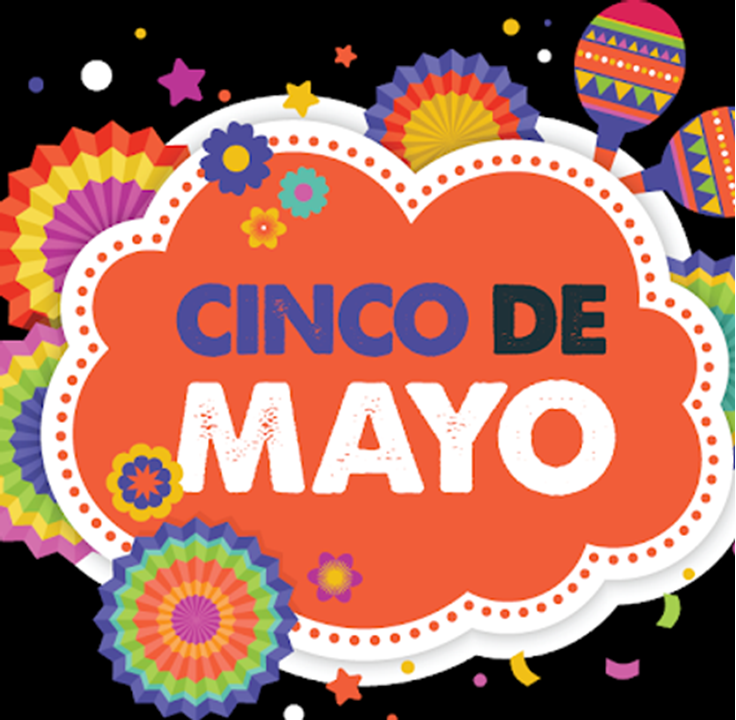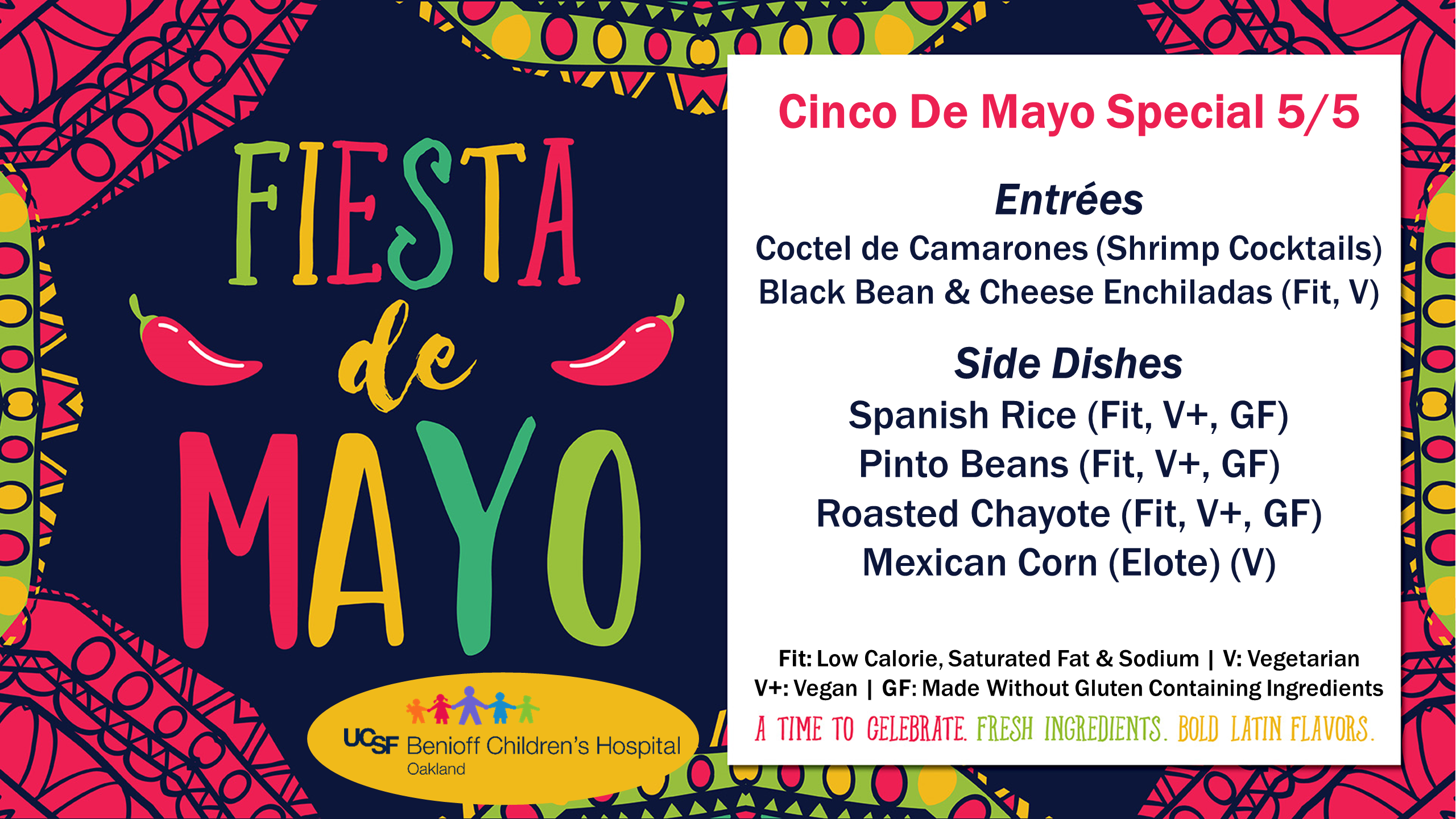Cinco de Mayo, or the fifth of May, is a holiday that celebrates the date of the Mexican army’s May 5, 1862 victory over France at the Battle of Puebla during the Franco-Mexican War. The day, which falls on Thursday, May 5 in 2022, is also known as Battle of Puebla Day. While it is a relatively minor holiday in Mexico, in the United States, Cinco de Mayo has evolved into a commemoration of Mexican culture and heritage, particularly in areas with large Mexican-American populations.
SPOTLIGHT: BCH Chicanx Latinx Campus Association (CLCA)
The BCH CLCA held its inaugural gathering on September 17, 2021, lead by George Weiss, BCH VP of Operations and Mario Peraza, Co-Chair of UCSF CLCA. BCH CLCA aims to create community and support Chicanx, Hispanic, and Latinx BCH staff. Monthly meetings are held every 2nd Friday at 2 pm. There currently 120 members in the BCH CLCA chapter. For more information, please email [email protected].

UCSF EVENTS
Cinco de Mayo Celebration!
Friday, May 5, 2023 |12 pm – 1 pm
Redwood Café at BCH Oakland main hospital
Come celebrate Cinco de Mayo with a live Mariachi band and Special Menu! Sponsored by the BCH Chicanx Latinx Campus Association (CLCA) and the BCH DEI/AR Council.
There wil be a special menu provided by the Redwood Cafe at the BCH Oakland main hospital.
See the VIDEO on Instagram
CINCO DE MAYO HISTORY (History.com)
Cinco de Mayo is not Mexican Independence Day, a popular misconception. Instead, it commemorates a single battle. In 1861, Benito Juárez—a lawyer and member of the Indigenous Zapotec tribe—was elected president of Mexico. At the time, the country was in financial ruin after years of internal strife, and the new president was forced to default on debt payments to European governments.
In response, France, Britain and Spain sent naval forces to Veracruz, Mexico, demanding repayment. Britain and Spain negotiated with Mexico and withdrew their forces.
France, however, ruled by Napoleon III, decided to use the opportunity to carve an empire out of Mexican territory. Late in 1861, a well-armed French fleet stormed Veracruz, landing a large force of troops and driving President Juárez and his government into retreat.
The Battle of Puebla
Certain that success would come swiftly, 6,000 French troops under General Charles Latrille de Lorencez set out to attack Puebla de Los Angeles, a small town in east-central Mexico. From his new headquarters in the north, Juárez rounded up a ragtag force of 2,000 loyal men—many of them either Indigenous Mexicans or of mixed ancestry—and sent them to Puebla.
The vastly outnumbered and poorly supplied Mexicans, led by Texas-born General Ignacio Zaragoza, fortified the town and prepared for the French assault. On May 5, 1862, Lorencez gathered his army—supported by heavy artillery—before the city of Puebla and led an assault.
The battle lasted from daybreak to early evening, and when the French finally retreated they had lost nearly 500 soldiers. Fewer than 100 Mexicans had been killed in the clash.
Zaragoza’s success at the Battle of Puebla on May 5 represented a great symbolic victory for the Mexican government and bolstered the resistance movement. In 1867—thanks in part to military support and political pressure from the United States, which was finally in a position to aid its besieged neighbor after the end of the Civil War—France finally withdrew.
The same year, Austrian Archduke Ferdinand Maximilian, who had been installed as emperor of Mexico in 1864 by Napoleon, was captured and executed by Juárez's forces. Puebla de Los Angeles was renamed for General Zaragoza, who died of typhoid fever months after his historic triumph there.
Cinco de Mayo in Mexico
Within Mexico, Cinco de Mayo is primarily observed in the state of Puebla, where Zaragoza’s unlikely victory occurred, although other parts of the country also take part in the celebration.
Traditions include military parades, recreations of the Battle of Puebla and other festive events. For many Mexicans, however, May 5 is a day like any other: It is not a federal holiday, so offices, banks and stores remain open.
Why Do We Celebrate Cinco de Mayo in the United States?
In the United States, Cinco de Mayo is widely interpreted as a celebration of Mexican culture and heritage, particularly in areas with substantial Mexican-American populations.
Chicano activists raised awareness of the holiday in the 1960s, in part because they identified with the victory of Indigenous Mexicans (such as Juárez) over European invaders during the Battle of Puebla.
Today, revelers mark the occasion with parades, parties, mariachi music, Mexican folk dancing and traditional foods such as tacos and mole poblano.
U.S. Holiday or Mexican Holiday
According to David Hayes-Bautista, author of “Cinco de Mayo: An American Tradition,” the holiday originated in Columbia, California, mere weeks after the Battle of Puebla. On May 27, 1862, news about the French army’s defeat in Puebla arrived in the mining town. Californio, Mexican and other Latinx miners who had immigrated to the state because of the Gold Rush broke out in celebration. They sang patriotic songs, delivered speeches, had toasts, and even shot their guns to the air honoring the Mexican army’s victory. Following this spontaneous celebration, Latinx social and patriotic groups created the holiday. These organizations shaped the public memory of the Battle of Puebla as a representation of anti-imperialism, freedom, and democracy. "
VIDEOS

